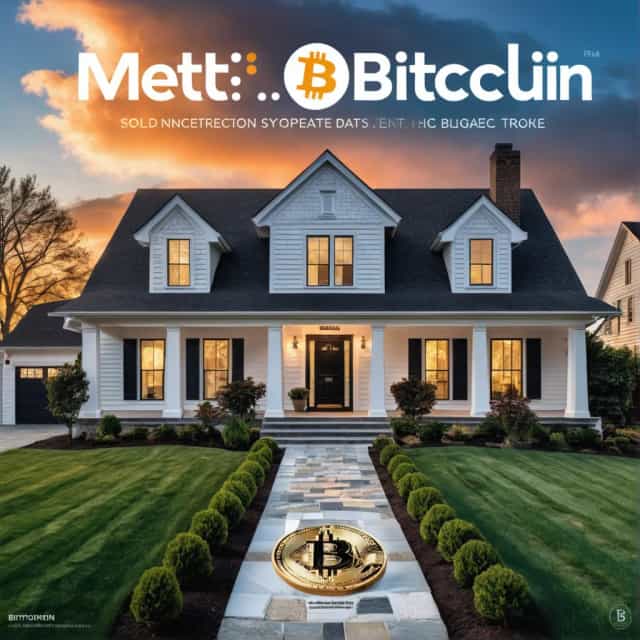
출처: Block Media
Escalating Wealth Inequality: Top 1% Surpasses Middle Class in Asset Ownership
The United States is witnessing a historic milestone in wealth concentration. Recent data analyzed by financial market specialist Barchart reveals that, for the first time, the top 1% of earners possess more wealth than the entire middle class. These insights, shared on October 19 via X (formerly Twitter) using Federal Reserve statistics, highlight that in the second quarter of 2023, the wealthiest elite's asset holdings exceeded those of households in the middle class, defined as those within the 20th to 80th income percentiles. This marks a critical turning point in wealth dynamics.
A Historical Shift in Wealth Distribution
Over the past three decades, wealth distribution in the U.S. has undergone dramatic changes. In 1993, the top 1% of earners controlled approximately 16% of household assets. By 2023, this figure surged to 27%. Meanwhile, the middle class experienced an opposite trend, as their share of household wealth fell from 36% in 1993 to just 26% in the same period. This reversal is a stark indicator of the deepening structural inequalities within the U.S. economy, underscoring how the middle class is gradually losing economic ground.
Key Factors Driving the Wealth Gap: Financialization and the Cantillon Effect
Economists point to several forces propelling this widening wealth divide, particularly trends in financialization and the Cantillon Effect. Financialization refers to the growing dominance of financial markets, assets, and institutions as primary drivers of economic activity. Meanwhile, the Cantillon Effect illustrates how the benefits of newly created money disproportionately favor those closest to its source—typically financial market participants.
In recent decades, central bank policies have amplified the Cantillon Effect by directing liquidity into financial sectors, benefiting asset holders rather than labor-based income earners. As a result, those with substantial financial resources—predominantly the wealthiest 1%—have capitalized on these systemic imbalances, leaving the middle class further marginalized.
The Role of Federal Reserve Policies in Wealth Inequality
The Federal Reserve's monetary policies since the 2008 Global Financial Crisis have significantly shaped the current wealth landscape. Through aggressive quantitative easing (QE) programs and prolonged periods of ultra-low interest rates, vast liquidity entered financial markets. Asset prices—including stocks, bonds, and real estate—soared, disproportionately benefiting individuals who already owned substantial holdings.
The top 1%, largely invested in these financial assets, experienced outsized gains, further consolidating their wealth. In contrast, the middle class, which relies primarily on income from physical labor and lacks significant investment portfolios, has faced limited opportunities for wealth accumulation. This stark contrast epitomizes the growing divide in asset ownership and the challenges faced by middle-income households in navigating structural economic barriers.
Long-Term Structural Implications
This unprecedented concentration of wealth reflects systemic changes within global financial systems, signaling that asset inequality is not a temporary phenomenon but a persistent, long-term issue. Unlike income inequality, asset inequality exposes disparities in access to wealth creation pathways. The data underscores a fundamental shift in how wealth is generated and distributed, with capital ownership playing an increasingly dominant role in economic stratification.
Such structural implications raise critical questions about the sustainability of economic mobility, social stability, and the equitable distribution of resources. For the middle class, the challenges of wealth building amidst these dynamics have become daunting, exacerbating their economic vulnerability and dependence on labor income.
Bitcoin as a Store of Value and Hedge Against Inequality
Amid this mounting asset inequality, Bitcoin (BTC) is gaining prominence as a potential answer to systemic financial imbalances. Its fixed supply and transparent issuance policies make it an attractive alternative for those seeking to preserve wealth and hedge against inflationary monetary systems. Bitcoin's decentralized and deflationary nature offers a stark contrast to traditional financial systems, where monetary policies often exacerbate wealth disparities.
As concerns about long-term asset inequality intensify, Bitcoin is emerging as a viable store of value for individuals aiming to safeguard their finances. The cryptocurrency provides a way to circumvent conventional economic structures, raising broader conversations about its role in an era defined by concentrated wealth and systemic inequality.
Conclusion: A Pivotal Moment in Wealth Dynamics
The unprecedented concentration of wealth among the top 1% signals a profound transformation in the U.S. economic fabric. The middle class faces declining ownership of assets and shrinking opportunities to build wealth, while systemic factors like financialization and central bank policies exacerbate these disparities. In response, alternatives such as Bitcoin are gaining traction, offering hope for those seeking equitable solutions in an era of widening asset inequality. As this trend evolves, its implications will undoubtedly shape the future of economic equity, stability, and accessibility for generations to come.










